stepping back in time at the Fort Rotterdam of Makassar
It was high noon summertime in Makassar, and the sun was vicious. I was still keen in exploring the old city so I persevered and had my friend tour me inside Benteng, more commonly known as Fort Rotterdam. I’ve been in Makassar countless times, often for a day trip or an overnight visit, but it was my first time here.

a becak sits under the shadow of a solid arch inside Fort Rotterdam, Makassar, South Sulawesi, Indonesia
Canon PowerShot S40, 1/200s, f/5, 7.1 mm
In pre-colonial Dutch East India period, Benteng Ujung Pandang or the Fortress of Ujung Pandang, was a showcase of the great Gowa kingdom of South Sulawesi whose success and prosperity was borne from the famous as seafaring Bugis tribes. It was built by the King of Gowa in 1545 and was just one of about 17 defensive fortresses along the coastline of Makassar. First made of clay, it was later completed in stone in the 1600s.
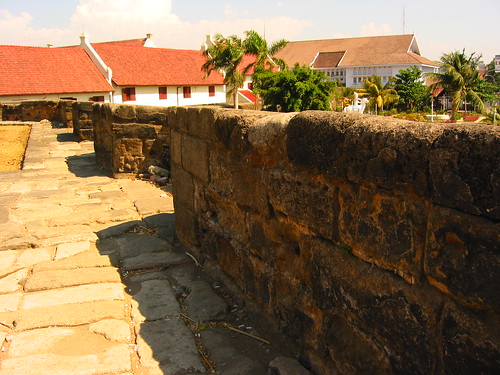
preserved remnant of the original Gowa stone walls
Canon PowerShot S40, 1/400s, f/5.0, 7.1 mm
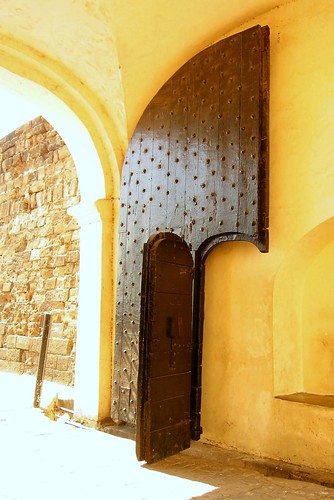
an second interior door of the gate of the fort
Canon PowerShot S40, 1/60s, f/5, 7.1 mm
The fort was no match though to the gunships of the Dutch and it fell to the hands of the invaders. While all the other 16 fortresses were destroyed, Benteng UPandang was taken over and reconstructed after the treaty of Bungaya in 1667. Serving as a safe gateway to Maluku (Moluccas), the fabled spice islands, the Benteng was built in the shape of a turtle going down to sea, hence the local term panyua. The five-meter walls of the fort were of natural black stone and were designed to repulse attack.
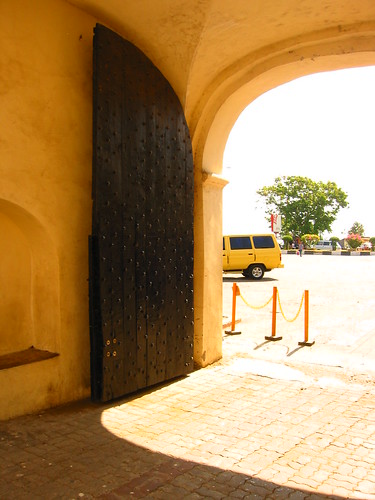
the main gate opens into the Benteng harbor facing the Strait of Makassar
Canon PowerShot S40, 1/200s, f/5.0, 7.1 mm
During the 17th and 18th century, the fort was a walled city, with numerous buildings that serve the military, political, economic and even religious functions. There was the governor’s residence, the military officers’ quarters, government offices, the armory, the library, the warehouses, the garrison and at the center, a Protestant church. The fort has five bastions in every corner of the wall.
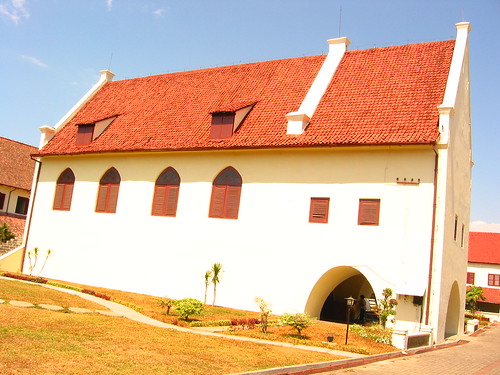
the Protestant Chapel in the middle of the fort courtyard
Canon PowerShot S40, 1/400s, f/5.0, 7.1 mm
Colonial Dutch architecture is basically simple, almost severe. Exterior walls, though thick, are unadorned. Windows, sparsely distributed around the buildings, are few. Most buildings have louvre windows with open slats that can admit air – obviously a concession to the hot climate of the island- but some are also solidly constructed vertical panels fit for a garrison.
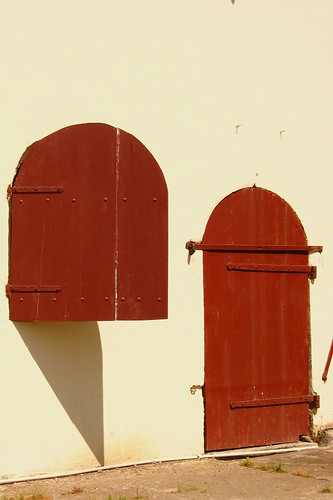
a window and door of a building inside the fort
Canon PowerShot S40, 1/1000s, f/5.0, 14.7mm
The colonial-era Dutch buildings inside are remarkably well-preserved. Some are given new life as a public museum and as a center for culture and arts. On occasion, spaces can be used for music and theatre performance rehearsals. When I was there, a Christian bible study was even ongoing in one of the corridors.

the former military officers’s quarters
Canon PowerShot S40, 1/250s, f/5.0, 7.1 mm
From a distance, the buildings inside the fort look quite robust and solid, transporting you to a different place in time. Despite the modern usage and the refurbishments, the fort remains a solid remembrance of an aggressive military past.
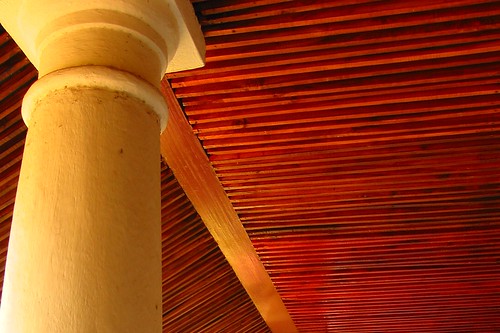
Canon PowerShot S40, 1/40s, f/5.0, 7.1 mm






No comments:
Post a Comment